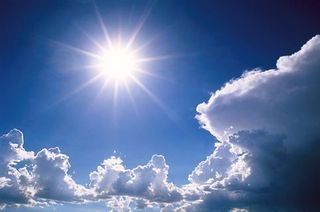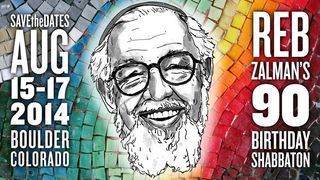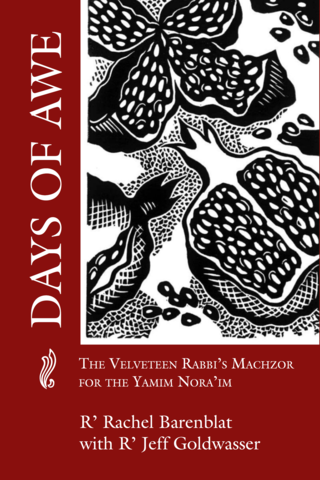Rachel Barenblat's Blog, page 154
June 24, 2014
Inspiring awe, cultivating joy
Bless us and guide us in living with awe and singing, shouting with joy. -Psalm 67: 7,8,5 What inspires our awe? How can we cultivate joy?
— A Way In @ Mishkan (@awayinms) June 22, 2014
I retweeted that message a few days ago. It comes from my friends and colleagues at A Way In at Mishkan Shalom, and the questions it raises have stayed with me. What inspires our awe? How can we cultivate joy? I was glad to see these questions crop up in my Twitter stream amidst tweets about the World Cup and about injustices both large and small and about everything that's agitating people in the news. (I'm always glad to see people using Twitter for contemplative purposes.)
Awe is an essential component of spiritual life. The Hebrew יראה / yirah is one of the two quintessential ways we're meant to respond to God. (The other is אהבה / ahavah, love.) I feel awe when I gaze at a beautiful vista, or experience the power of nature, or encounter ancient history by walking in a place where people have walked for thousands of years. I felt tremendous awe when our son was born. I also feel awe when I name a baby, join two people in marriage, or stand before my community for a funeral.
Joy is essential too -- which is not the same as happiness or cheer. (I've written about that before: What does it mean to be commanded to be joyful?) I feel joy when I bless our son on Friday nights; when I am reunited with people I love who live far away; when I sing the beloved melodies of the Days of Awe; when I look around the table at the faces of my loved ones at Pesach or Thanksgiving or Christmas eve. Often music, singing, great stories, and feeling known and understood bring me joy.
I think it's not accidental that this tweet uses the language of cultivation. These spiritual qualities don't necessarily arise on their own. Each of us needs to tend to her own spiritual soil, to nurture and nourish these seedlings so that they will grow. We can practice receptivity to moments of awe -- which won't necessarily make the awe arise, but may make us more inclined to notice it and experience it fully. And we can practice receptivity to moments of joy in the same way, creating space in which joy can arise.
Drawing out the cultivation metaphor further: I've learned that there are certain subjects, emotions, states of being which poison my soil. And just like in a literal garden, if there's a little bit of toxicity in my soil, the things I'm cultivating can still grow, though they may be impacted by what nutrients are and aren't available. But if the soil becomes too poisoned, then awe and joy can't grow there. Reb Zalman talks sometimes about the "spiritual vitamins" which we need. It's also important to avoid spiritual toxins.
Prayer and meditation are the most effective tools I've found for this work. I don't only mean liturgical prayer and regular sitting-in-meditation, though both of those are part of my practice. I also mean what Reb Shawn (Rabbi Shawn Zevit) and Reb Marcia (Rabbi Marcia Prager) called "living with prayerful consciousness." Can I bring a sense of prayerful awareness to every moment in my day? Can I approach ordinary time with the meditative ability to step back and notice my own thoughts arising?
Paying attention to the transitions between weekday and Shabbat, and to the journey from one festival to the next -- paying attention to when my heart and soul feel expansive, and when they feel constricted -- having the discernment to pull myself away from places, ideas, and activities which feed anger and ego instead of awe and joy -- these are some of the items in my contemplative toolbox. They don't necessarily inspire awe or bring joy, but they make me more receptive to both when they arise.
For those who are so inclined: I'd love to hear your answers to the questions posed by the folks at A Way In. What inspires your awe? How do you cultivate joy?
How Caretaker takes care of me
A recent post at the Cassandra Pages -- Bonjour, summer -- moved and delighted me. Those photographs of berries, mushrooms, radishes -- holy wow! Summer's abundance in living color. I've walked through some of Montréal's markets, though not at this time of year. Last fall when I went north to promote 70 faces and Waiting to Unfold, I saw piles of pumpkins, gourds of all sizes and shapes, arrangements of dried grasses: some of autumn's late bounty. But Beth's post reminded me of some of the reasons I so adore summertime. Extravagant greenery, blossoms of every variety, fruits and vegetables grown in one's own local soil.
Here where I live we don't have markets quite like the ones in Montreal, but we do have a handful of community-supported farms. There's a new one right in our neighborhood, actually! But we still go to the one about fifteen minutes away, where we've been members for some twenty years. Longtime readers may remember hearing about this place before -- it's called Caretaker Farm. Every summer when we reach the first distribution week, the first time when members are invited to come to the farm and gather a share of the seasonal bounty, as I walk onto the grounds I say a fervent shehecheyanu (the blessing which thanks God for keeping me alive, sustaining me, and enabling me to reach this moment.) I am always grateful to be able to return.
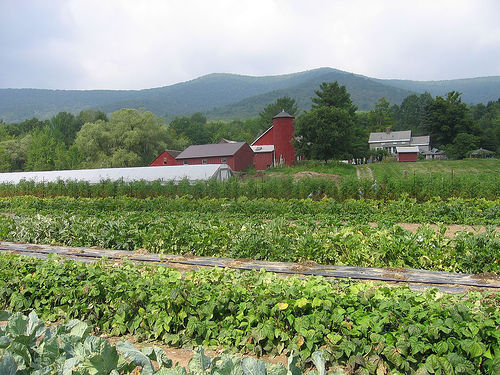 The barn and farmhouse, seen from the fields.
The barn and farmhouse, seen from the fields.Every year the first salad from the farm is a revelation. Tender Boston lettuce, a riot of tiny arugula and komatsuna and yukina greens, wedges of sweet bright white baby turnips and coins of spicy radish: it always amazes me how different these things taste from the boxed mixed greens and commercially-grown cucumbers we pick up at the supermarket all winter long. Even if I were to try to replicate Caretaker's bounty at the grocery store, it wouldn't taste the same. Once I sliced into a Caretaker carrot and a commercially-grown carrot at the same time and I was awed by by the local one's color and flavor. It's one thing to read about the difference between local agriculture and commercial farming; it's another thing entirely to see and feel and taste that difference.
There are few places in the world which are more beautiful to me than Caretaker Farm. I think it's probably objectively a gorgeous place -- fields of bright plants gleaming in the sunshine, cupped by the gentle curves of the Berkshire mountains; it's pretty as a postcard -- but for me the beauty is as much emotional as it is physical. This is a piece of land which has for decades been lovingly stewarded by farmers who we admire for their commitment to community and commitment to the land. It's a real community gathering place. Every week when I arrive with my canvas bag slung over my arm, I see people I know. We greet each other in the distribution barn, in the herb garden, in the fields where we're picking beans or berries or basil leaves.
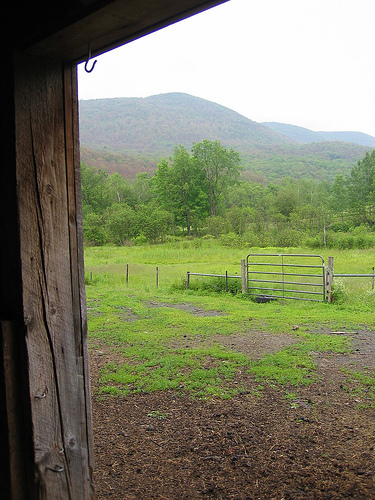 Looking out the lower-level barn door.
Looking out the lower-level barn door.I started coming to Caretaker when I was a college student, the summer before my senior year when I was hard at work on my senior thesis in religion. I came to Caretaker through the years I spent in grad school. I came to Caretaker the summer I was pregnant, and with my hand on my growing belly watched other people's children playing in the sandbox and picking raspberries -- and I wondered what it would be like to bring our child there someday. I came to Caretaker with our infant son strapped to my chest in a sling. The year he was newly-walking he ran around the grounds. The first tree he ever tried to climb is a little one next to the distribution barn, where he has seen bigger kids in the branches.
Longtime readers have heard me tell the story about running into my friend Rev. Rick Spalding in the cherry tomato rows, and his remark that the farm "is some of the holiest ground I know." That story keeps resonating for me. On Shabbat mornings in summer when I'm not leading davenen at my shul, the farm is usually where I can be found -- hanging out with our son near the sandbox or the frog pond, or walking down to see the chickens in their movable coop, calling "Shabbat shalom!" to congregants who I see across the fields. The farm is holy not because it's a consecrated structure with stained glass windows or a lofty dome, but because of the years of loving attention and intention which have been devoted to creating community in this place.
Caretaker Farm takes care of me. No matter what's on my mind or what's difficult in my life or in the world, stepping onto that piece of land uncoils my tension. It's a place which feels to me like Shabbat, whether I'm there on a Saturday morning or a Tuesday afternoon. There's something about this farm -- from the herb garden and the cupboard of fresh bread on distribution days, to the far pumpkin and raspberry fields across two wooden bridges and a stream -- which evokes some of that same feeling for me: the feeling of entering into Shabbat, of leaving my to-do lists and my workday consciousness behind.
June 23, 2014
What's in a name? Torah, meanings, translation.
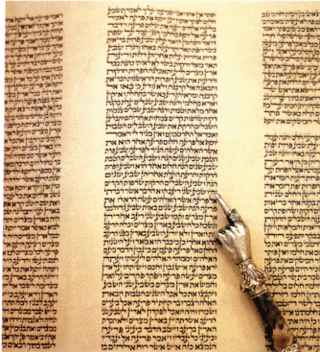 Five holy books are treasured in the innermost heart of my tradition:
Five holy books are treasured in the innermost heart of my tradition:
Beginning. Or "in the beginning" or "as God was beginning." The beginning of creation. The beginning of our tradition. The beginning of our story. The beginning of our ancestry. How the world came to be what it is.
Names. The names of our ancestors. Their histories and stories. The name of the narrow place where we were held constricted, and the names of those who led us free. Names have meaning. Names tell us who we are.
God Called. God called to us. God calls to us still. Though we've replaced the service of the altar with the service of the heart, God is still speaking. God calls us to ethical behavior. God calls us to love one another.
In the Wilderness. The wilderness is the place where we open ourselves to transformation. The place where we most clearly see God's work in the world. The place where we hear the Voice calling us to covenant.
The Words. These are the words; these are the memories; these are the stories we tell about the journey we've been taking. These are the words of our teachers, spoken in the last moments before their deployment in this incarnation comes to an end.
Beginning. Names. God Called. In the Wilderness. The Words. To me these names evoke an entirely different set of associations than Genesis, Exodus, Leviticus, Numbers, Deuteronomy.
The names we most often use in English come to us via a few levels of translation. A few millennia ago, these books of Torah had colloquial Hebrew names: Ma'aseh B'reshit ("The work of creation"), Yetziat Mitzrayim ("The going-forth from Egypt"), Torat Kohanim ("The laws of the priests"), Pekudim ("Countings / census"), and Mishneh Torah ("The repetition of the Torah"). Those names got translated into Greek, probably when the Torah was translated into Koine Greek in what eventually came to be called by the Latin name Septuagint. (That translation happened sometime around 300 B.C.E.) And then from Greek, the names were translated again into English.
Our English names for these Biblical books, therefore, have echoes of Greek. For instance, the name "Deuteronomy" comes from Deuteronomion, "the second law," which is a translation of mishneh Torah, "the repetition of the Torah," because that book of Torah contains a recapitulation of some of what has been said before. But I don't speak Greek, so deuteronomion doesn't have much meaning for me. I have to pause and translate the English Deuteronomy into the Greek deuteronomion and then translate again from that word to the concept "second law." That name is always at a remove.
And yet those are the names which English-speaking Jews most often use. They're considered to be the standard English names, and we speak English, so it makes sense, right? But in using these names, I think we reinscribe a certain kind of foreignness in our minds and hearts. The fact that many of us know these names better than we know the books' Hebrew names shows the distance between us and the words of our tradition. Our minds have been colonized. The words we use for our tradition are not our own.
For those of us who understand at least some Hebrew, the Hebrew names of the five books are far more resonant than the Greek-inflected English ones. B'reishit / בראשית , Shmot / שמות, Vayikra / ויקרא, Bamidbar / במדבר , Dvarim / דברים -- each of these Hebrew words evokes other related words, cousins to those words, descended from the same word-roots. As Rabbi Marcia Prager has written in The Path of Blessing:
Like leaves and branches growing from a tree trunk, most Hebrew words derive from what is called a root. Just as each leaf must be understood as a part, fed by the roots of the whole tree, individual Hebrew words cannot be fully understood without reference to their whole tree. The root stores all the meanings flowing into each one of the leaves.
(For more on this, check out my review of Rabbi Prager's book -- and consider picking up a copy of her book, which is tremendous.) The word "Deuteronomy" is foreign, but דברים / D'varim -- "The Words" -- now that speaks to me. As a writer, as a poet, as a Jew, I know that words matter. If I think of that last book of Torah as "The Words," something opens up in me. I want to know: which words? Why these words, and not others? What story do the words join forces to tell?
In an ideal world, every Jew would speak enough Hebrew to be able to name the books of the Torah using our tradition's own names, and would understand what those names mean and feel the ripples of the other related words and ideas which those names evoke. But we don't yet live in that ideal world. It's fine to argue that we should be using our own tradition's native names for these books, but for those who don't yet speak much Hebrew, the Hebrew names may feel as foreign as the Greek ones do.
I wonder how the books of the Torah might feel different to English-speakers if we called them by English names which evoke the meaning of their Hebrew names, instead of by English names which evoke Greek words which most of us don't intuitively know.
June 22, 2014
Breathing, prayer, the planet
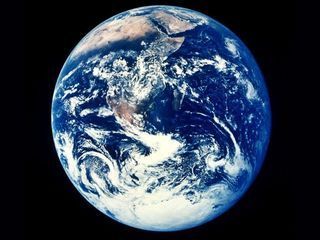 I learned from a recent episode of Cosmos that the entire planet inhales and exhales over the course of a year. In this season of northern-hemisphere summer, our planet inhales carbon dioxide and the vegetation breathes out oxygen; at the other end of the year, it goes the other way. (Apparently most of the earth's vegetation is in the northern hemisphere, because of where the planetary land masses are, so the earth inhales during northern-hemisphere spring and summer, and exhales during southern-hemisphere spring and summer.)
I learned from a recent episode of Cosmos that the entire planet inhales and exhales over the course of a year. In this season of northern-hemisphere summer, our planet inhales carbon dioxide and the vegetation breathes out oxygen; at the other end of the year, it goes the other way. (Apparently most of the earth's vegetation is in the northern hemisphere, because of where the planetary land masses are, so the earth inhales during northern-hemisphere spring and summer, and exhales during southern-hemisphere spring and summer.)
The notion of the whole earth taking and releasing one slow breath over the course of a year really moved me. And it made me think of Jewish Renewal teachings about names of God, about prayer, and about breath.
Perhaps you know that there is a four-letter Name of God which in Jewish tradition we do not pronounce or, in some traditions, consider unpronounceable. The letters are yud heh vav heh; sometimes, for the pursposes of writing or speaking, we use the letters in a different order, הויה / Havayah. This Name appears to be related to the Hebrew root היה / heh yud heh, "to be," so it can be understood as a teaching about God as what Paul Tillich would call "the ground of being."
But my friend and teacher Reb Arthur (Rabbi Arthur Waskow) offers a different way of thinking about this name. He notes that if we stop trying to put vowels on these letters, and if we read the letter vav as a w (some scholars argue that in ancient Hebrew that letter was pronounced less like "v" and more like "w"), we get something that sounds like yyyyhhhhwwwwhhhh -- in other words, breath itself. If God's holiest name is encoded in our very breathing, then every time we breathe, we are reciting a name of God!
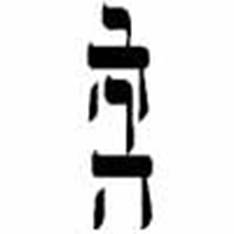 There's a teaching that this four-letter Name can be mapped onto the human body. We carry the Name with us everywhere we go: the yud as the head, heh as the torso and arms, vav as the column of the spine, heh as the legs reaching down. Each of us bears the imprint of that Name in our form.
There's a teaching that this four-letter Name can be mapped onto the human body. We carry the Name with us everywhere we go: the yud as the head, heh as the torso and arms, vav as the column of the spine, heh as the legs reaching down. Each of us bears the imprint of that Name in our form.
There's also a breathing meditation which maps the four letters of the Name onto breathing. First, beginning with yud - that's the still point before the breath, the moment just before drawing air symbolized by this tiniest of Hebrew letters. Then on the letter heh comes the inbreath, inhalation, filling the lungs with breath. On the letter vav one pauses; this is the pause between inhaling and exhaling, the moment of fullness which hangs suspended in time. On the second letter heh one exhales; breathes out; gets ready to begin again.
That meditation is one way to make every breath an invocation of God. But Reb Arthur's teaching is more radical than that: he argues that even without this intentionality, our breathing offers praise. He finds hints of this our siddur, our prayerbook. "Kol haneshama t'hallel Yah / All that breathes praises You" (from Psalm 150) -- "nishmat kol chai t'varech et shimcha / The breath of all life blesses Your name" (from Nishmat Kol Chai) -- the authors of these words left these clues for us in our liturgy. They understood that breathing itself is prayer.
In Biblical Hebrew, neshamah means both "breath" and "soul." Jewish tradition posits an intimate connection between breath and spiritual life. In the very beginning of our story as we've received it in Torah, God breathes the breath of life into the creature formed from earth, the adam made from adamah. Our sacred story tells us that our breath comes from, and connects us to, the Holy One of Blessing.
Breathing is, Reb Arthur notes, a deep connection between all life on earth. Not only do humans and animals breathe, but so do trees and plant life, in their own way. And there's a kind of collaboration between our human and animal breathing and the breathing of the greenery on our planet. We breathe in what the trees breathe out; the trees breathe in what we breathe out. If all breath is praise, and we breathe in what the trees breathe out and vice versa, then we and the trees are interbreathing prayer all the time. (For more on this: Why YAH/YHWH.)
What I learned from Neil DeGrasse Tyson in that episode of Cosmos gives new resonance to Reb Arthur's teachings. It's not only the animals and plants who are breathing praise, but -- according to Tyson -- the whole planet is breathing. And if, as Jewish tradition teaches, each living breath offers praise to our ineffable Creator, then it's not such a stretch to imagine that the very Earth itself is offering long slow praise as it orbits the sun. Talk about harmony of the spheres!
And that in turn leads me to a teaching from my beloved teacher Reb Zalman (Rabbi Zalman Schachter-Shalomi). Gaia (our planet) is alive, he says -- a vast organism in which each living being on earth is a cell, a tiny particle of the whole. As in any body, each cell is needed to be in communication with the others. Just as he's taught that each religion is an organ in the body of humanity (and needs, therefore, to be both distinct from and also in communication with the other organs in that body), he also teaches that each person, each soul, each living being on earth is a cell in the planetary body, a fragment of the planetary whole.
As each of us breathes in and out, we are reciting a divine Name. Every living being is a prayer wheel constantly turning. And all of us together -- humans, animals, plants, the very planet herself -- recite that Name on a scale more vast than I can imagine. Holy wow.
June 21, 2014
Reflections on a b'nei mitzvah
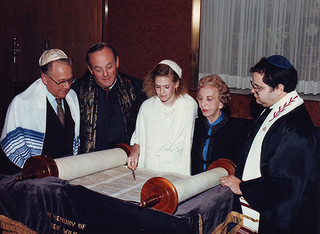 Leading services on a Shabbat when one of our kids is called to the Torah as a bar or bat mitzvah can be an interesting challenge. For one thing, our numbers swell -- from our usual 15-20 to 60, 80, even 100. For another, the people who've gathered for a lifecycle event usually don't all know each other, and they often don't know our melodies, and there are always some -- including the junior high school contingent -- who are not Jewish and perhaps have never been to a synagogue before in their lives.
Leading services on a Shabbat when one of our kids is called to the Torah as a bar or bat mitzvah can be an interesting challenge. For one thing, our numbers swell -- from our usual 15-20 to 60, 80, even 100. For another, the people who've gathered for a lifecycle event usually don't all know each other, and they often don't know our melodies, and there are always some -- including the junior high school contingent -- who are not Jewish and perhaps have never been to a synagogue before in their lives.
A particular kind of output of energy is required to lead this kind of kahal (congregation.) In some ways it's more like High Holiday services -- our folding walls folded back, the big sanctuary full of people, my concomitant outpouring of voice and song and self -- than like a "regular" Shabbat morning.
I take pleasure in being able to introduce our liturgy, the rhythms of our prayer, to people (both non-Jewish and Jewish) who may not have much familiarity with these words or the flow of the service. I explain a bit as we go, trying to make sure that my explanations serve as useful guideposts to the service but not obstacles or roadblocks to the way the service needs to flow. I try to make people laugh out loud at least a few times. When I get chuckles from around the room, I know I'm reaching people.
Often I don't know until after the service is over whether it's "worked" for people -- whether it reached them where they are, whether it opened them up to an emotion, whether they are emerging feeling a little bit different than when we began. Often I never find out whether it worked, or for whom. But sometimes after the service people will spontaneously offer me a response, and I treasure those. I love knowing that our morning of worship took someone someplace they maybe didn't expect to go.
Of course, the greatest joy for me is watching one of our kids shine. Watching those years of learning, the hard work of practicing the Torah portion and overcoming the hurdle of reading from an unpointed handwritten scroll, all of the effort that went into preparing a d'var Torah which will teach something about their Torah portion and how it relates to life that they know -- watching all of that pay off. Watching their family kvelling, taking visible pride in their child's lifecycle milestone.
These days I can't help imagining what it will be like when it is our son on the bimah (pulpit). What will his voice sound like at thirteen? What will his sense of humor be like? What will be his passions, his obsessions, to which he will struggle to relate his Torah portion? Will I weep when we offer him blessings? I try not to write scripts. He's only four and a half. We have a long way to go before we get there. I don't want to focus on what's coming and miss what's happening now. But there's a certain sweetness in the anticipation.
Could I have imagined, at my own celebration of bat mitzvah, how much joy I would take in this rabbinic life? I'd like to think that if I could send a message back through time, twelve-year-old me wouldn't be all that startled to hear that this is what I do now, and that I love doing it, every time. I remember aspiring to learn the service well enough that if the rabbi were to call in sick, I would (I imagined) be able to lead the congregation in prayer all by myself. Maybe this is exactly where I was always meant to be.
Photo: taken the day before my bat mitzvah. With my maternal grandparents, the rabbi, and the cantor.
June 20, 2014
Summer solstice
a psalm of thanksgiving
For sky as implausibly blue
as a plastic kiddie pool,
scrawled with the white streaks
of self-erasing contrails.
For grass stretching up,
for the rustle of oak and birch,
for sumac spreading its canopy
over blackberry and wild grape.
For this canvas umbrella
once red as a tomato
now leached by sun
to Nantucket pink.
For cold coffee, milky
as a silted river
and sweet as birdsong,
ice cubes rattling in my glass.
(Originally posted in 2013: Psalm before the solstice.)
Every morning, in our daily liturgy, we bless God as the creator of light and former of darkness, maker of peace and of all things. Our prayer speaks, I believe, not only of the literal light of the star which we call our sun, but also the light of wisdom and insight. In our creation story, the very first thing God spoke into being was light, before the creation of the heavenly bodies we call stars and sun and moon. That supernal light still shines forth. We find that light in Torah. We find that light in wisdom. We find that light in moments of insight, illumination, en-light-enment.
As we move through the summer solstice (in this hemisphere -- aware that for our cousins in the global South this weekend brings the shortest day of the year), may we find ourselves filled with light: not only literal light but also the light of understanding and insight. And may we carry that light within us, and share it with all who we meet, in months to come.
Shabbat shalom!
June 19, 2014
Join us in Boulder to celebrate Reb Zalman's 90th!
Longtime readers know that I go to Colorado every January for the ordination of new ALEPH rabbis, cantors, and rabbinic pastors, and for the OHALAH conference of Jewish Renewal clergy. (That's where I was ordained.)
The reason we meet in Colorado is not just that it's relatively centrally-located (in the continental United States, anyway) -- it's because our beloved zaide (grandfather) and teacher Reb Zalman lives in Boulder, and we travel there to be with him.
This year I'm returning to Colorado a second time, in August, to celebrate Reb Zalman's 90th birthday with a Shabbaton (Shabbat retreat) and a Sunday celebration. Here's information about the whole program -- Shabbaton, Sunday birthday party, and all.
If you've been impacted by Jewish Renewal or by Reb Zalman's teachings -- if you've ever wanted to experience Jewish Renewal teachers or Jewish Renewal davening (prayer) or Jewish Renewal community -- I hope you'll come. This is going to be an extraordinary weekend.
You can come for the Shabbaton (which will feature amazing services, in which I am blessed to be able to take part) or just for the Sunday celebration, which will be called Reb Zalman at 90: Celebrating a Heart as Big as the World. That celebration will feature Father Matthew Fox, author and teacher Sylvia Boorstein, Professor and Rabbi Art Green, and Chazzan Richard Kaplan, among others.
You may have seen me mention last week that Reb Zalman has been in the hospital. Thank God, I am grateful to be able to share word that he has moved out of the ICU and into a regular unit, and according to recent postings on his CaringBridge site, has been sitting in a chair studying Torah, and talking, singing, and davening as his energy permits. It is our fervent hope that he will be able to enjoy this amazing 90th birthday celebration along with us.
If you're in or near Colorado, or if you can get yourself to Colorado, I hope you'll join us. Register now -- space is limited. And if you're not able to join us but are able to make a contribution in honor of his lifetime of extraordinary teaching, I know that would be appreciated, too.
I hope to see you in Boulder!
June 18, 2014
Reconnection
 I've been given a gift this week -- the opportunity to open the door for someone who wanted to reconnect with Judaism.
I've been given a gift this week -- the opportunity to open the door for someone who wanted to reconnect with Judaism.
I know what it's like to be spiritually thirsty. I know what it's like to feel "on the outside," in galut -- exile -- from community and from God.
I've told the story here many times of how, at the end of my first week-long retreat with Jewish Renewal community, I was walking in the fields talking with God as was the practice of Rebbe Nachman of Bratzlav. For personal reasons I'd felt alienated from God and from Jewish community for a long time. I told God that I was grateful to be on speaking terms again, and that I wished I didn't have to leave God behind when I went home again -- and suddenly it was clear as day, as obvious as the wildflower-laden field in front of me, that God had been with me even when I had felt distant, and that God would be with me wherever I went. It was a life-changing moment.
Jewish Renewal was my door back in to community, tradition, relationship with God. I am endlessly grateful for the compassionate welcome, and for the amazing teachings I've been blessed to receive from my teachers there. When I entered into rabbinic school, one of my most fervent hopes for my rabbinate was that I would have the opportunity to open this door for others who felt the way I had once felt -- not certain whether or not there was a place for them at the Jewish communal table.
At one of my Rabbis Without Borders Fellows gatherings last year, we talked about the question "who is your Torah for?" I wrote a blog post in response, and here's part of what I wrote then:
The idea that we teach the Torah we most need to learn is one which was already very close to our hearts. And so is the idea that the unfolding Torah of our lives is a sacred text -- different from the written Torah we find in our libraries, but also holy. And the idea of "using Jewish" to serve people -- bringing Jewish wisdom, Jewish tools, to bear on the work of serving God and serving humanity -- is also close to my heart. We were all asked to ponder, and to answer, the question of "who is my Torah for?" As soon as I heard the question, my answer arose in me.
My Torah is for anyone who is thirsty. Anyone who's thirsty for connection, for community, for God. Anyone who wants to make their lives holy or to become more conscious of the holiness in the everyday. Anyone who wants access to the rich toolbox of Jewish wisdom and traditions and ideas which I am blessed to have as my yerusha, my inheritance...
(The whole thing is here: Rabbis Without Borders: Who is your Torah for?)
Every time I get to sit down with someone and hear their story, I am grateful that I get to do this work. Every time I get to sit down with someone and listen to the words of their heart, I am grateful that I get to do this work. And every time I'm able to give something back in return -- whether it's a teaching or a practice, a tallit or a book, or just a word of welcome -- I am grateful that I get to do this work, and grateful for the teachers who opened up this toolbox for me so that I can share its contents with those who need.
Praying for the three abducted Israeli teens
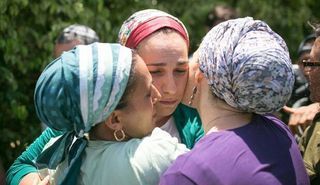 You've probably read by now about the three Israeli teens who were kidnapped while hitchhiking home from their yeshiva in the West Bank. (If not, here's a recent article from TIME: Israel holds breath over three teens kidnapped onWest Bank.)
You've probably read by now about the three Israeli teens who were kidnapped while hitchhiking home from their yeshiva in the West Bank. (If not, here's a recent article from TIME: Israel holds breath over three teens kidnapped onWest Bank.)
CNN reports that Israel has detained 150 Palestinians in an effort to find the boys. The Guardian reports that Israel has sealed off most entrances to Hebron (see Israeli forces tighten grip on West Bank in search for three abducted teenagers.)
Netanyahu blames Hamas for the kidnapping; according to the Guardian, Hamas leadership has "furiously denied Netanyahu's allegations." (Meanwhile, in Ha'aretz, Abbas condemns kidnapping.)
The three missing teens are in my thoughts and in my prayers, as are their parents. As a mother, I can only begin to imagine the horror of knowing that one's child has been abducted and is in danger.
I recently retweeted, from the Women of the Wall Facebook page, part of the status update:
We continue to pray for safe and quick return of the kidnapped teens, along with all of Israel and the Jewish world. On our minds all day long as we go about our lives waiting for news.
I think back to my post from a few days ago about what it's like for me to be holding sick loved ones in prayer as I go about my ordinary life, and it seems to me that this is parallel. All of us who hold these teens in our prayers are experiencing this kind of bifurcated reality.
I pray that the boys are safe and will be returned to their families. And I pray for hope and change across that wounded land. My heart breaks for every child, and every parent, who suffers.
What can we, ordinary people worried about the fate of these three boys, do? The traditional answer from Jewish tradition is to pray. We often turn to psalms at times like these -- I've been reading psalm 27 with these teens in mind. And here is A Prayer for Three Missing Israeli Teens by Alden Solovy, courtesy of the URJ. An excerpt:
This dismay is almost too much to bear.
Return Gilad Shaar, Naftali Frenkel, and Elad Yifrach
To the cradle of their parents’ arms,
And the refuge of their homes,
Speedily, in life and in health.
Bless their families with endurance and faith
That they will soon be reunited in the fullness of joy.
Bless our boys, in their captivity,
With hope and courage.
Grant them the strength and fortitude
To face, chas v’shalom, any shames or tyrannies forced upon them.
May it come to pass speedily and soon.
I've read essays in recent days which talk about the interconnections between this tragic story and the occupation. Perhaps the most powerful of these, for me, is Max Fisher's The end of 'both sides'. He writes:
Of the many tragedies of the Israel-Palestine conflict, one of the greatest may be that it does not just disproportionately harm civilians — many conflicts are this way — but that it seeks at every turn to pull regular people across the invisible line from civilian to active combatant.
The kidnapped yeshiva students were treated not as harmless students, nor even quite as settlers — which as unarmed vanguards of the occupation exist in their own gray area between civilians and soldiers — but as analogous to enemy combatants, fair game in the fight. And the Israeli government has responded by arresting dozens of Hamas political leaders, deciding that it would be better to push them into the category of terrorist, of criminals responsible for an act they may have had nothing to do with, than allow them to continue existing in a gray area. It's a conflict that feeds on endless escalation, on upgrading every civilian to a passive combatant — Israeli families are accused of abetting the occupation, Palestinian families of abetting terrorism — and every passive combatant to a front-line fighter. It's a dynamic that serves nothing and nobody but the conflict itself.
+972 magazine has also had some thought-provoking coverage, including one essay which argues that "Providing context may be taboo at a time when the entire country is focused on the fate of three kidnapped Israeli teens, but it is part and parcel of the story." (That's from The kidnapping - Israelis aren't the only ones facing national tragedy.)
The reason Mairav Zonszein suggests that it's "taboo" to provide context right now is that many people argue that we shouldn't be talking about the occupation at a time like this.
To me, that's like saying that in the wake of a mass shooting it's 'not the time to talk about gun control'-- I understand the impulse, but I don't agree with it. To me, every shooting in America is another reminder of why we need safe and sane laws around firearms. And every tragedy in Israel / Palestine is another reminder of why the status quo is untenable and the occupation needs to end. Of course the kidnapping is indefensible. And it also happened in a context, and that context is the occupation, and I believe that as American Jews we owe it to the Jewish state which we love to educate ourselves about that occupation and to call on our Israeli brothers and sisters to end it.
To end on a note of hope, I'll share one more link: At kidnapping site, Jews and Muslims join in prayer. The subheader is "In heart of West Bank’s Etzion bloc, sheikh, rabbi, activists and others gather to issue joint call for three teens to be returned safely." The sheikh in question, Ibrahim al-Hawa, is someone I was blessed to meet several years ago while in Jerusalem. I am always heartened by news of people who might consider each other enemies choosing instead to come together in peace, to pray together, and to work together for a better world.
May their prayers and ours be answered, speedily and soon.
Image: the mothers of Eyal Yifrah, Gil-Ad Shaer, and Naftali Frenkel. Found via R' Menachem Creditor.
June 17, 2014
Announcing Days of Awe
Days of Awe
a machzor / high holiday prayerbook
for the Yamim Nora'im (Days of Awe / High Holidays)
edited and assembled in the transdenominational spirit of Jewish Renewal
Featuring liturgy both classical and innovative; translations both faithful and creative; original artwork and photographs intended to stir the soul; teachings from Rabbis Zalman Schachter-Shalomi, Burt Jacobson, Rami Shapiro, Hanna Tiferet Siegel, and many others; and powerful poetry by poets ranging from Yehuda Amichai to Marie Howe, David Lehman to Alicia Ostriker.
6 x 9
348 pages
Cover art by Natalia Moroz
Edited and assembled by Rabbi Rachel Barenblat
with Rabbi Jeff Goldwasser
$7.53 bound L-to-R (like an English book) at Amazon
$8.46 bound R-to-L (like a Hebrew book) at Lulu
(Those are paperbacks, perfect-bound; a hardcover is forthcoming for those who prefer it.)
If your congregation is interested in a bulk order, email me and we can talk about how to make that work.
About the project
For many years now, we at Congregation Beth Israel have used a looseleaf machzor created by Reb Jeff (a.k.a. Rabbi Jeff Goldwasser) called B'Kol Shofar. And also for many years, I've been supplementing that machzor with handouts, additions, and extra pages. A few years ago I began writing and collecting High Holiday material -- poems, prayers, different renderings of classical liturgy -- with the hope of compiling a machzor which would incorporate both the basic framework and many transliterations and translations from B'Kol Shofar which have become familiar and beloved to me and to our community, and all of the new material I've been collecting, hopefully stitched together with an invisible and light editorial touch.
As I worked on this project, I had a few goals in mind:
I wanted the machzor to be visually beautiful. Days of Awe features original artwork and photographs (some contributed by artists from my congregation, among them photographer Len Radin, artist Heather Levy, and papercut artist Anna Kronick; some from other artists, among them woodcut artist Loren Kantor, soferet Julie Seltzer, printmaker and jewelry artist Jackie Olenick, and rabbinic student Salem Pearce) as well as what I think is a pleasing and readable layout.
I wanted the machzor to sparkle with great poetry. Days of Awe features poems by a wide range of amazing poets, among them Yehuda Amichai, Alicia Ostriker, Myra Sklarew, David Lehman, Philip Schultz, Judy Chicago, and Rumi as translated by Coleman Barks. (It also features some of my own poetry.)
I wanted the machzor to be user-friendly. Days of Awe features transliterations of everything which my community does aloud (and then some), and translations of absolutely everything, along with clear directions on where to turn next. Whether you're a lifelong high holiday afficionado or attending your first Rosh Hashanah or Yom Kippur service, this book will help you through.
In classic Jewish Renewal spirit, I wanted the machzor to blend tradition with innovation. Days of Awe pairs traditional text (much of what you would find in any machzor, including of course cherished prayers like Unetaneh Tokef and Avinu Malkeinu) with new liturgy both in Hebrew and in English (including rabbinic pastor Shayndel Kahn's Aleinu, Rabbi Hanna Tiferet Siegel's Hashkivenu, and Rabbi Goldie Milgram's Psalm 150.)
I wanted the machzor to be inspiring. Days of Awe features deep holiday teachings from Rabbis Jill Hammer, Burt Jacobson, Marcia Prager, Rami Shapiro, Zalman Schachter-Shalomi, David Seidenberg, and others.
Days of Awe was created with the needs of my own community in mind, but I hope that it will suit other communities as well, and I'm honored that a few other communities are already planning to use it for their high holiday services this year.
Not-for-profit labor of love
Days of Awe is a not-for-profit endeavor, a labor of love given freely to my local community and to the Jewish world at large. I'm a proponent of remix culture, and I believe that every new prayerbook is at heart a remix, bringing a beloved old text into renewed life.
Over the last few years I've contacted the poets, artists, and liturgists whose work I hoped to include, and received their permission to use their work in this way, as long as I kept to my intention of selling the book at cost. No profit is made: I'm charging exactly what it costs to print and bind. A list of sources / credits appears at the back of the book, so you can see which artist is responsible for each illustration and photograph and piece of calligraphy, and so you can look up the source for each written poem or meditation.
This project has consumed an uncountable number of hours over the last few years. I am so proud of the end results, and so pleased to be able to share them with all of y'all. If you use the machzor, either in your community or at home alone, please let me know what it's like for you -- I welcome feedback of all kinds.
Available at Amazon $7.53 L to R binding (paperback) | Available at Lulu $8.46 R to L binding (paperback)
(hardcover coming soon for those who prefer it)
Rachel Barenblat's Blog
- Rachel Barenblat's profile
- 6 followers


